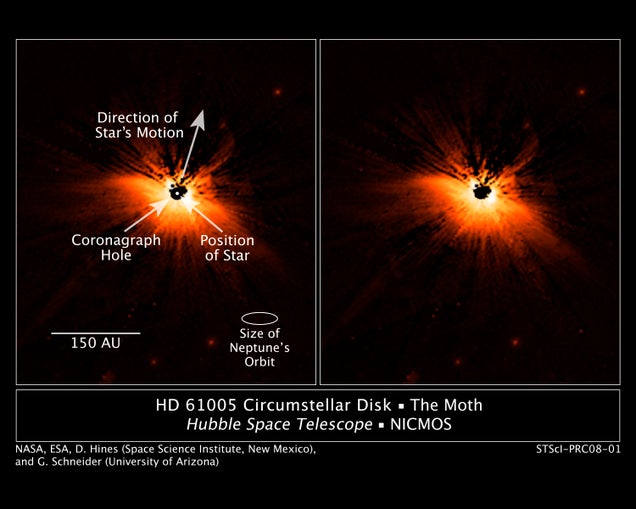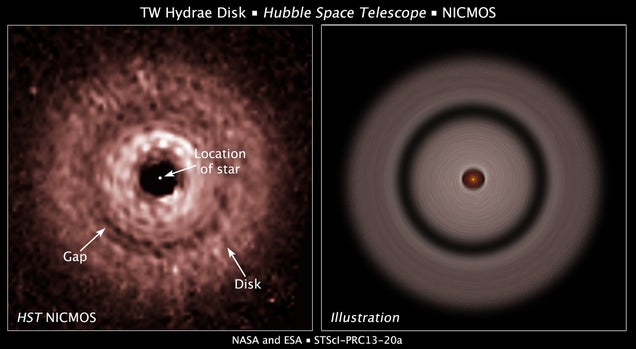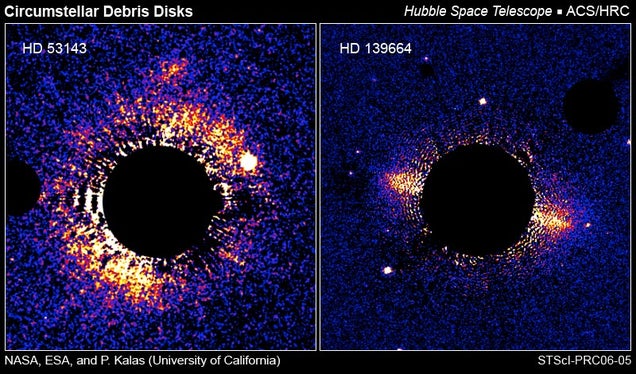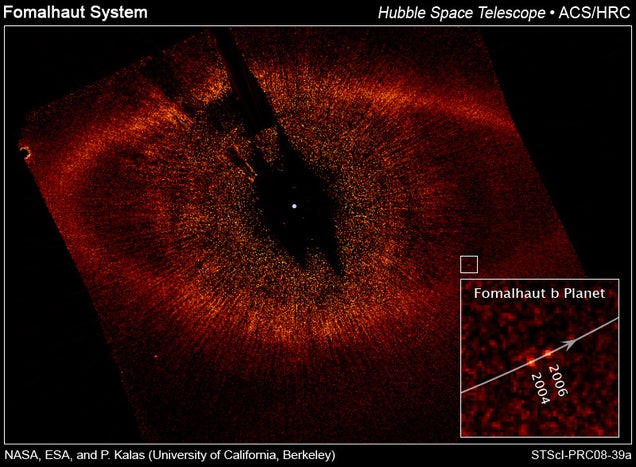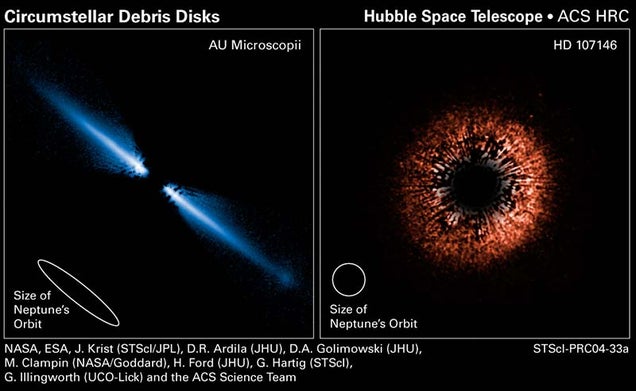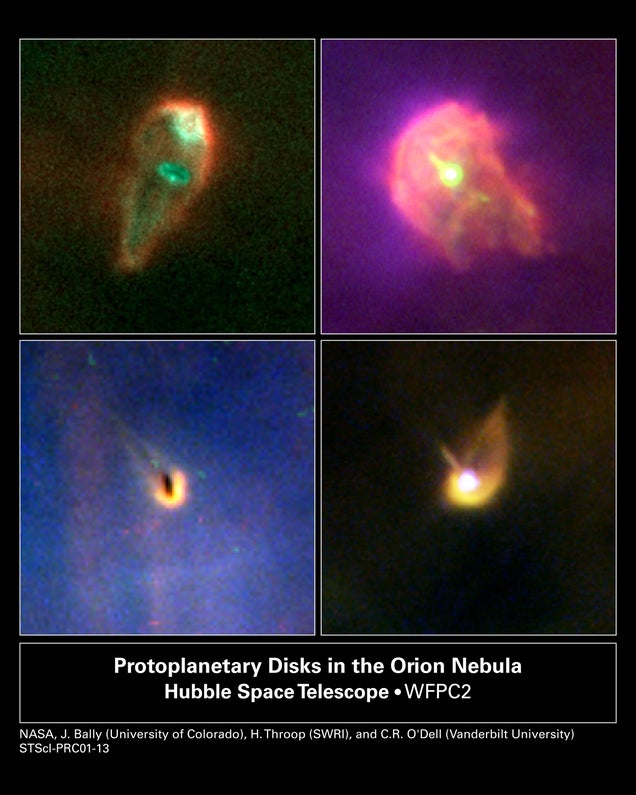Thread Manager
Moderator
- Joined
- Jan 24, 2011
- Messages
- 0
- Reaction score
- 3
- Points
- 1
This is a continuation thread, the old thread is [split]263084[/split]

NASA discovers 715 new planets
Our galactic neighborhood just got a lot bigger. NASA on Wednesday announced the discovery of 715 new planets, by far the biggest batch of planets ever unveiled at once.
By way of comparison, about 1,000 planets total had been identified in our galaxy before Wednesday.
Four of those planets are in what NASA calls the "habitable zone," meaning they have the makeup to potentially support life.
The planets, which orbit 305 different stars, were discovered by the Kepler space telescope and were verified using a new technique that scientists expect to make new planetary discoveries more frequent and more detailed.
"We've been able to open the bottleneck to access the mother lode and deliver to you more than 20 times as many planets as has ever been found and announced at once," said Jack Lissauer, a planetary scientist at NASA's Ames Research Center in California.
Launched in March 2009, the Kepler space observatory was the first NASA mission to find planets similar to Earth that are in, or near, habitable zones -- defined as planets that are the right distance from a star for a moderate temperature that might sustain liquid water.
Tuesday's planets all were verified using data from the first two years of Kepler's voyage, meaning there may be many more to come.
"Kepler has really been a game-changer for our understanding of the incredible diversity of planets and planetary systems in our galaxy," said Douglas Hudgins, a scientist with NASA's astrophysics division.
The new technique is called "verification by multiplicity," and relies in part on the logic of probability. Instead of searching blindly, the team focused on stars that the technique suggests are likely to have more than one planet in their orbit.
NASA says 95% of the planets discovered by Kepler are smaller than Neptune, which is four times as big as Earth.
One of them is about twice the size of Earth and orbits a star half the size of Earth's sun in a 30-day cycle.
The other three planets in habitable zones also are all roughly twice the size of Earth. Scientists said the multiplicity technique is biased toward first discovering planets close to their star and that, when further data comes in, they expect to find a higher percentage of new planets that could potentially have a life-supporting climate like Earth's.
"The more we explore the more we find familiar traces of ourselves amongst the stars that remind us of home," said Jason Rowe, a research scientist at the SETI Institute in Mountain View, California, and co-leader of the research team.
I too think Moon Bases are ideal. It will get people used to living on another "planet" at least and take our first baby steps to inter stellar travel and colonization.
I just really hope we can come together as nations and co exist on these other rocks. Not like we are here. Its funny how once we get into space a lot of politics seem to disappear. International space stations work harmoniously together for the greater good.
I truly think space exploration is humanities one chance to become one entity achieving one common gaol and not divided like we have become on Earth.

NASA says it may have found evidence for the seeds of black holes, pointing back to the origins of the universe itself.
New information from the Wide-field Infrared Survey Explorer (WISE) has revealed that supermassive black holes are located even in so-called dwarf galaxies. The finding is significant, because the standard belief is that black holes were formed when galaxies collided, forming larger celestial bodies.
"Our findings suggest the original seeds of supermassive black holes are quite massive themselves," said George Mason University’s Shobita Satyapal, lead author of the new study. The paper was published in the latest issue of the Astrophysical Journal.
The use of infrared technology allows WISE to pick up details that other telescopes couldn’t otherwise detect using traditional visible light sources that are unable to penetrate through the thick layers of dust that occupy parts of deep space.
"Though it will take more research to confirm whether the dwarf galaxies are indeed dominated by actively feeding black holes, this is exactly what WISE was designed to do: find interesting objects that stand out from the pack," NASA astronomer Daniel Stern, who did not participate in the study, said.
Black holes remain an ongoing source of mystery and speculation in the scientific community. Most smaller galaxies observed by NASA are described as “bulgeless," meaning they do not appear to possess a cluster of stars near the galaxy's center. However, the infrared data gathered by WISE indicates that there may actually be giant black holes existing at the center of these smaller galaxies.
For years, scientists have worked to confirm the existence of smaller, intermediate black holes. While those smaller black holes remain elusive, it has been assumed by some that they must have existed at some point before becoming the supermassive black holes we are more familiar with today.
But Satyapal says the WISE findings could mean that supermassive black holes have been around since the earliest days of the universe itself, approximately 15 billion years ago. As the universe itself has expanded over time, the black holes have also theoretically grown.
"We still don't know how the monstrous black holes that reside in galaxy centers formed," Satyapal said. "But finding big black holes in tiny galaxies shows us that big black holes must somehow have been created in the early universe, before galaxies collided with other galaxies."
Other scientists have theorized that exploding stars may be creating infant, intermediate black holes on a regular basis. As those newborn black holes consume gas from within their host galaxy they would continue to grow over time. And the very existence of black holes, at least as we currently understand them, was recently brought into question by Stephen Hawking.
The WISE telescope was recently put back into service by NASA as part of the Jet Propulsion Laboratory’s ongoing efforts to detect near Earth objects, i.e. asteroids that potentially pose a threat to the Earth.
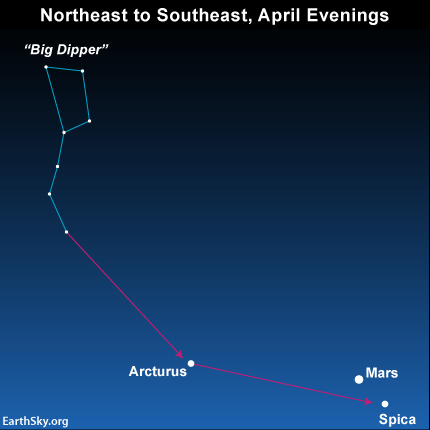
Not any big discovery or anything new, but just for fun -
http://earthsky.org/tonight/mars-at-opposition-out-from-sundown-until-sunup-on-april-8
Mars at opposition tonight - April 8.
Earth in its smaller, faster orbit passes in between the sun and red planet Mars. Our motion in orbit places Mars opposite the sun as seen in our sky, making it easy to see with the unaided eye.
It should already be visible to most tonight -
Where and when to see - http://earthsky.org/tonight/mars-at-opposition-out-from-sundown-until-sunup-on-april-8#how

It's called the theory of Cosmological Natural Selection and it was conjured by Lee Smolin, a researcher at the Perimeter Institute for Theoretical Physics and an adjunct professor of physics at the University of Waterloo. His theory suggests that the universe is — for all intents and purposes — a black hole generator, or a system that's optimized to produce as many baby universes as possible.
In his book, The Life of the Cosmos, Smolin proposed that Darwinian processes still apply at the extreme macro-scale and to non-biological entities. Because the universe is a potentially replicative unit, he suggests that it's subject to selectional pressures. Consequently, nearly everything the universe does is geared toward replication.
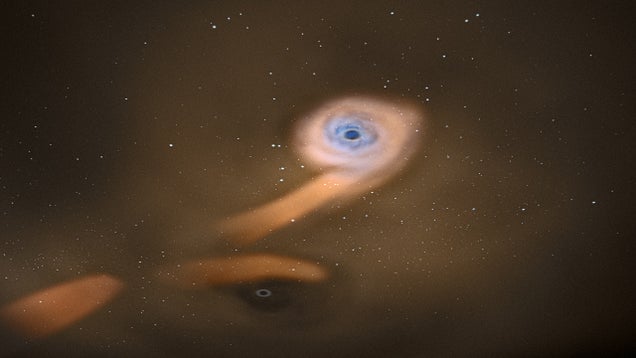
For the first time ever, astronomers have detected a pair of supermassive black holes at the center of an inactive galaxy. The unique objects were discovered because they ripped apart a star when the ESA's observatory just happened to be looking in the right direction.
In an active galaxy, black holes are continuously fed by gas cloud, but in an ordinary inactive galaxy, or quiescent galaxy, black holes are fueled by tidal disruption events that occur sporadically and are impossible to predict.
Finding black holes in quiescent galaxies is difficult because there are no gas clouds feeding the black holes, so the cores of these galaxies are truly dark. So to detect them, astronomers need a ton of luck; they basically have to wait for an occurrence called a tidal disruption event. In this case, such an event occurred as a star was pulled apart by the gravity of the black hole, resulting in a burst of X-rays. It was a case of the ESA's XMM-Newton space observatory looking at the right place at the right time.
So, astronomers now know that a binary supermassive black hole in a quiescent galaxy is actually a thing, and there may be an entire population of these objects in the universe (but at unknown rates). Some other cool facts about this discovery:
Models show one of two possible configurations: Either the primary black hole weighs as much as 10 million solar masses and is orbited by a black hole of about a million solar masses in an elliptical orbit, or the primary black hole is about a million solar masses and in a circular orbit.
The separation between the black holes is quite small: 0.6 milliparsecs, or about 2 thousandths of a light year. That's about the width of our Solar System.
Eventually, these two black holes will merge. And when they do so, they'll release a massive burst of energy into the universe (but not primarily in X-rays). The final merger is expected to be the strongest source of gravitational waves in the universe.
Depends on the star. If it's some washed up 80's star like Scott Baio, who cares? If it's someone like Jennifer Lawrence, there's hell to pay."because they ripped apart a star" is it just me or is that not the most badass line ever.
Depends on the star. If it's some washed up 80's star like Scott Baio, who cares? If it's someone like Jennifer Lawrence, there's hell to pay.





"because they ripped apart a star" is it just me or is that not the most badass line ever.
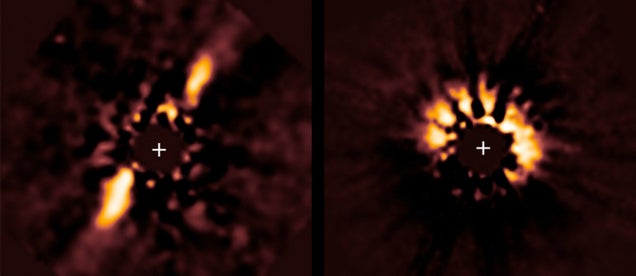
Researchers have used new image processing techniques to reveal two images of planetary systems forming around their home stars. The images are, according to NASA, "two treasures that were hiding in the Hubble archives." They are spectacular.

Discovered by a team led by Rémi Soummerfrom the Space Telescope Science Institute in Baltimore, Marylandthe stars were initially captured by the Hubble's Near Infrared Camera and Multi-Object Spectrometer in 1999 and 2006. The space agency says that "when Hubble first viewed the stars no disks were detected." Soummer and his team used "improvements in image processing, including algorithms used for face-recognition software" to analyze the images again, obtaining these pictures of the disk, which you can see reinterpreted by an artist at the bottom.
This bring the total of these images to 23. Here's a selection of the other ones.
